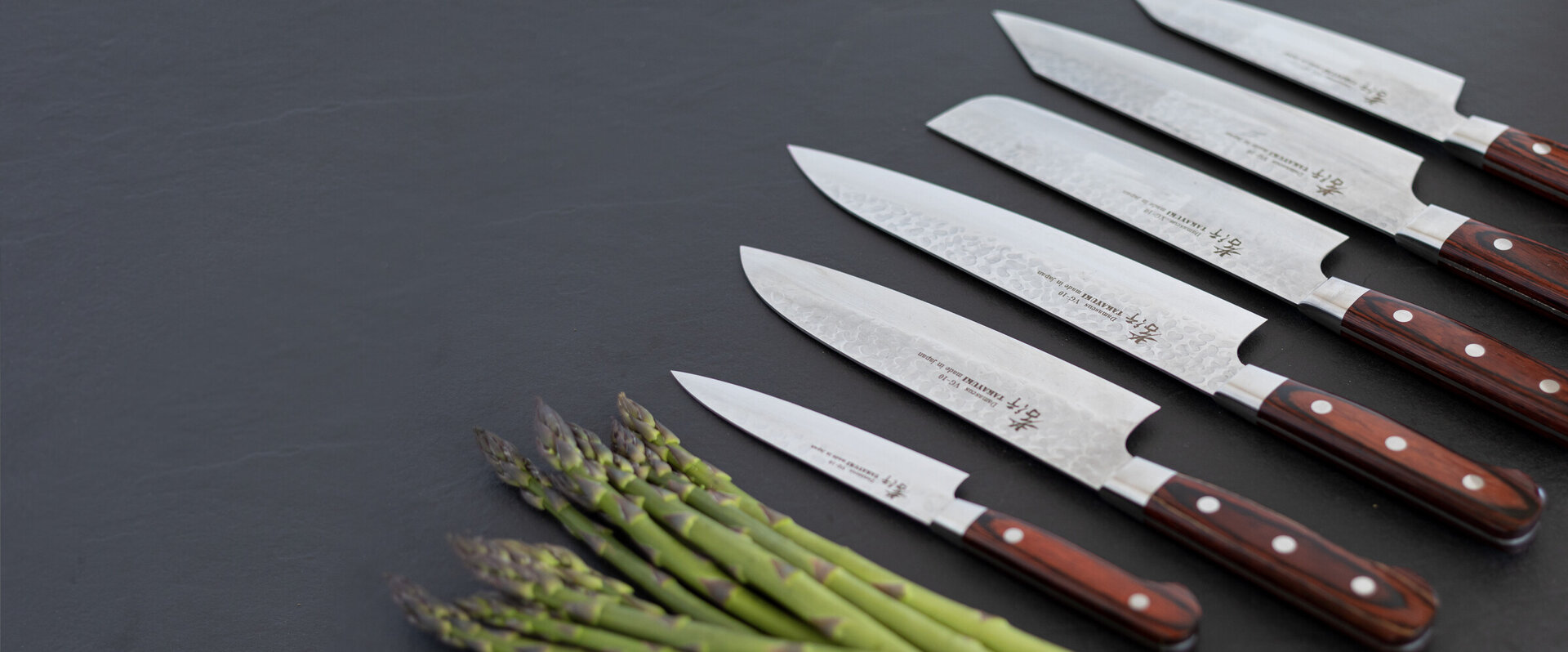Knife care is top of the list. A Japanese kitchen knife guarantees exceptional cutting pleasure. Japan has been forging quality knives for thousands of years. These knives do, however, need some extra TLC. A well-cared for knife will be a great addition to your kitchen and will last a lifetime.
How to clean your Japanese knife
Do not put your Japanese knife in the dishwasher!
This may seem obvious, but it’s worth saying: Never put your knife in the dishwasher! Ever! Why do you ask? Well, there are two big risks.
1) The first is that you will dull your blade. As soon as the door closes, you don’t know what happens with the edge of the blade. There are any number of things that the blade could rub against, which will ruin that razor-sharp edge and could even chip it.
2) The second thing is the chemicals in the detergent. Many contain corrosive agents that can cause pitting and spotting to the knife steel ruining their beautiful finish.
Hand wash only in soapy water with a soft dishcloth or sponge.
Never use a scouring pad. Use the dishcloth or sponge in a downwards motion starting from the spine (the top edge of your knife) and moving down and past the cutting edge. Please take extreme care, keeping your fingers away from the cutting edge! Never draw the cloth upwards from the cutting edge or use it along the edge in a forward and or backwards motion. This will save you buying new dishcloths and frequent trips to Accident & Emergency at your local hospital.
Never leave your knives sitting in a sink submerged in soapy water
The knife metal won’t like it and micro corrosion could occur causing tiny chips on the cutting edge.
Once clean, rinse and dry using your tea towel or an absorbent cloth, the same way you used the dishcloth, with extra care in keeping your fingers away from the blade.
Use your knife for what it’s designed for
Only use your knife for cutting food! It is not a can opener, screwdriver, hammer, or shellfish opener. All these items can be bought at your local hardware store for a lot less than the price of your Japanese knife.
Do not attempt to cut, hit or chop frozen products, bones, hard seeds or stoned fruits or any other hard vegetables or fruit as this could cause the blade to chip or break. Frozen items must be completely defrosted prior to cutting.
Always use a wooden chopping board, Plastic boards can also be used but some reasearch indicates they can be prone to micro chips of plastic chipping off and contaminating the food. Personally we recommend wooden boards. Never let the knife edge come in contact with Stainless Steel, Granite or Engineered Stone benchtops
Store your knives in a way so that blades don’t knock into each other.
Never use the cutting edge to scrape food off your chopping board, always flip the knife and use the spine (top edge) as this will dramatically increase how long your knife stays sharp.
When you cut, it is important to use a “locomotive” motion. Move the blade in either a forward or backward direction. By pushing the blade forward when you chop, rather than pushing straight down, the blade does the work instead of having to use your muscle to cut. This slicing motion will cut down on unnecessary muscle strain and keep your blade in excellent condition.
Never twist or wrench the blade sideways. Straight even strokes will keep your knife in good shape, while also getting you those perfect cuts.
Do not flex or bend the blade.
Do not use pull through, electric, or any handheld sharpeners. For periodic maintenance, a ceramic honing rod is advisable to realign the cutting edge between professional sharpening.
Never use a sharpening steel on a Japanese knife, in our opinion they do more harm than good.
When using a bread knife try not to let the serrated cutting edge touch the cutting board. When slicing and the knife is almost through the loaf simply lift the handle around 40mm and draw the knife back towards you letting the tip of the blade rest against the cutting board and it will do the final few millimetres of cut. We have personally used one of our Japanese bread knives for over three years , never sharpened it and its still razor sharp



